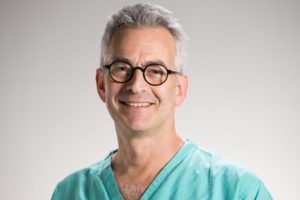
Vascular malformations have perplexed a plethora of physicians from diverse specialties for decades, writes Jocelyn Brookes. The British Society of Interventional Radiology (BSIR) has formed a Vascular Anomalies Special Interest Group (VASIG), which met last year for a study day to discuss treatment approaches and outcome measurements. This year, the group welcomes interested specialists to The Royal Free Hospital, London, on 5 December to continue the conversation.
Vascular anomalies (arteriovenous/vascular malformations [AVM]) and associated syndromes have traditionally formed an esoteric area of endeavour for a small group of interested practitioners whose specialist backgrounds reflect the variety and complexity of the lesions themselves.
These non-neoplastic yet proliferative disorders of vascular tissue differentiation may present at all times of life at unpredictable times of growth, causing pain, bleeding, thrombosis, and local space occupation (such as airway embarrassment), with consequent symptoms varying from trivial to catastrophic and lethal. Most are genetically random, but some are familial and syndromic.
Multiple interested specialist backgrounds
Presenting in all tissues of the body, dermatologists and plastic surgeons have taken an interest in superficial vascular malformations (for example, port wine stains), with vascular surgeons and, latterly, interventional radiologists attending to deeper tissue vascular malformations whilst neurointerventionists and surgeons have treated intracerebral ones.
Depending on local interests and referral patterns, specialist centres have developed and dissipated in each generation, usually with the retirement of the central enthusiast of the group.
Complex classification
Over the past 30 years, the International Society for the Study of Vascular Anomalies (ISSVA) has met biannually to develop an internationally agreed classification of these perplexing lesions based originally on descriptive characteristics, separating malformations from vascular tumours and defining separate lesions by their phenotypic approximation to arteries, veins, capillaries or lymphatics.
Distinction of high and low flow lesions has led to the development of observational treatment classifications guiding specific therapeutic approaches; for example, Houbart (neuro AVM), Yakes (peripheral AVM), and Dubois-Puig (peripheral low flow VM).
Many treatment modalities
Treatment methods range from excision surgery to arterial embolization, sclerotherapy to percutaneous coagulation. For high flow AVM lesions, the search for the elusive, transformative “nidus” absorbs practitioners with an intensity as if on a quest for the Holy Grail.
But things are changing in this challenging field.
Multidisciplinary approach
Long-term (officially incurable) chronic vascular lesions with (traditionally) heroic surgical complication rates need a specialist multidisciplinary approach involving appliances, nurse specialists, psychologists, palliative care, haematology and, more recently, genetics and pharmacology all working together to care for this challenging group of patients.
Exciting new developments
Recent exciting developments in understanding of errors of genetic signalling pathways in endothelial cell proliferation and corresponding pharmacological interventions are revolutionising the approach to VM care. Biomarker technologies and sophisticated imaging modalities are now casting light, logic and sense onto this dark and perplexing area with very real benefits to our patients.
Increasing professional interest
For the past five years, the AVM session at the Charing Cross Symposium (CX; London, UK) has begun to attract larger audiences and, with the growth of image-guided embolosclerotherapy as the most popular modality of treatment, the British Society of Interventional Radiology (BSIR) has drawn together the disparate groups interested in vascular malformations to search for commonalities of approach and measurements of outcome.
Come to VASIG meeting 5 December 2019
The Vascular Anomalies Special Interest Group (VASIG) met last year for a study day at The Royal Free Hospital, London, when over 60 delegates of all specialty backgrounds attended. Delegates brought challenging cases to discuss with colleagues from all over the UK and the Republic of Ireland. Offered gratis, the meeting rewarded its participants with five continuing professional development (CPD) points and was universally applauded as interesting, inspiring and relevant to practice.
The VASIG study day will be held on 5 December this year at The Royal Free Hospital, London. Local accommodation can be arranged. Bring your challenging cases.
Jocelyn Brookes is a consultant endovascular radiologist at The Royal Free NHS Foundation Trust and The London Clinic, London, UK.







